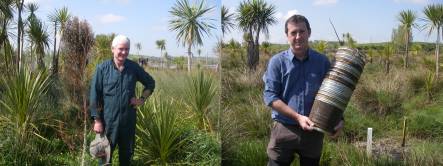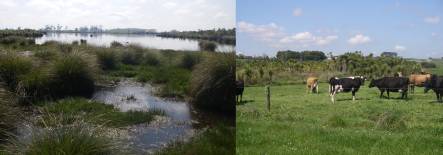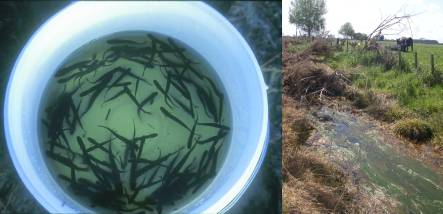From Radio New Zealand National "Our Changing World" programme broadcast on Thursday, 18 November 2010:
Black Mudfish and Restoring Lake Kaituna
To listen to the broadcast online please click here
Nick Ling, from the Department of Biological Sciences at the University of Waikato is an expert on New Zealand’s mudfishes, a group of five species that are part of the wider Galaxiid group of freshwater fishes. New Zealand’s mudfishes (PDF – note large file) are very unusual fish – when their wetland habitats dry out in summer they burrow into the soil and remain there, motionless, breathing air, until the first decent flood in autumn refills the wetland and washes them from their refuge. Early settlers in New Zealand were surprised to find live fish when digging vegetables from the earth. These cryptic, nocturnal fish were probably once the most abundant freshwater fish in New Zealand. However, the loss of more than 90% of our wetlands over the past two centuries has confined them to a few refuges, and three of them are endangered (PDF of recovery plan).
Nick Ling takes Alison Ballance on a rural tour near Hamilton to look for a black mudfish, and to show her conservation efforts that are helping restore mudfish habitat. She meets Horsham Downs dairy farmer Andrew Hayes, and talks about his family’s very successful Care Group Efforts on Lake Kaituna (also know as Lake B), a small peat lake on their farm. She also talks with student Rebecca Eivers about sediment traps, being used to prevent sediment run-off into the lake, and with former student Amy McDonald who carried out a successful black mudfish translocation to Lake Kaituna.
Andrew and Jenny Hayes, and their sons Alastair, Rodney, Derek and Fred were awarded a Ministry for the Environment Green Ribbon Award for Rural Sustainability in 2007 in recognition for their care, effort and leadership shown to improve the health of the peat lakes in the Horsham Downs area (PDF).





Comments